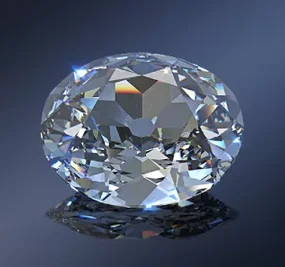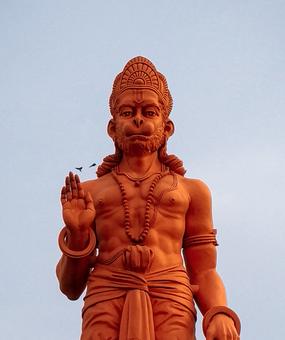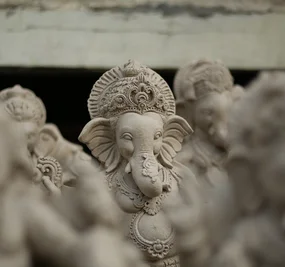Amazing facts about India.
In 1921, Robert Baden Powell founded the Boy Scouts movement. And he used a specific symbol to denote gratitude to those who helped the Boy Scouts and thus became part of their brotherhood. And that was the swastika symbol.
Robert Baden Powell wrote these lines when explaining why he chose the swastika:
“…Anyway, whatever the origin was,
the Swastika now stands for the badge of fellowship
among Scouts all over the world,
among Scouts all over the world,
and when anyone has done a kindness to a Scout
it is their privilege to present him or her with this token of their gratitude,
which makes him a sort of member of the Brotherhood,
and entitles him to the help of any other Scout
at any time and at any place…”
Thus, the swastika symbolized friendship. Interestingly, a birthday card printed in 1907 by E. Philips in the United States of America used the swastika as a good luck symbol.
The text on the back of the card explained the secret of the swastika symbol as:
The swastika is the oldest cross and emblem in the world. It forms a combination of four ‘Ls’ standing for luck, light, love and life. It has been found in ancient Rome, excavations in Grecian cities, on Buddhist idols, on Chinese coins dated 315 BC. and our own Southwest Indians use it as an amulet. It is claimed that the mound builders and cliff-dwellers of Mexico, Central America, consider the swastika, a charm to drive away evil and bring good luck, long life and prosperity to the possessor.
Unfortunately, modern day events associate the inverted swastika with Hitler, and his tyranny against the Jews. Nevertheless, thousands of people from different faiths around the world draw swastika sign with devotion and faith. What is the convoluted history of this auspicious sign?
‘Let good prevail’
Swastika is a Sanskrit word, which comes from ‘Su’ + ‘Asti’. Su is good and asti means to prevail.
Its source and the imagery can be traced back to the 5000-year-old Indus Valley, Sindhu-Sarasvati civilization.
The swastika symbol looks like four arms emerging from a center and swirling in a particular direction. It resembles a rotating disc.
Different civilizations have attributed varied reasons for its four arms depiction . Some have connected them with four primordial elements namely earth, water, fire, air. Some associate its four arms with the four directions, some with the four Vedas, while some with the four seasons.
Secret of the swastika symbol
The Universe is an epitome of rotation and revolution. Everything in the universe spins, rotates about itself as well as revolves around its parent or principal center of attraction.
Just as the earth rotates around itself and revolves around the sun, everything in the universe spins, rotates around itself, as well as revolves around its parent. It is this principle of aggregation and revolution, that is represented by the swirling swastika. With four arms emerging from a center and swirling in a particular direction, swastika became the symbol that ancients used to denote our galaxy.
Thanks to advanced astronomical instruments and space photography, modern-day scientists state the shape of our Milky Way is a spiral disc with four main spiral arms radiating from its center.
The ancients had named this Milky Way, Mandakini, to denote that it moves slowly.
Around the world
“…as you know from the account of the Swastika Thanks Badge
which I have given to you in scouting for boys,
the symbol was used in almost every part of the world in ancient days
and therefore has various meanings given to it.“
– Robert Baden Powell
The swastika became a ubiquitous symbol across the world widely used in cultures and civilizations.
A few instances:
Finland
* Swastika adorned flags and other military equipment as a war emblem.
* Blue swastikas painted on the wings of an aircraft, and were a national insignia of the Finnish Air Force.
* The 2nd Finnish aircraft in 13.3.1918 with swastikas on the chain of the Order – White Rose of Finland set up by Regent Mannerheim.
* On the 1st anniversary of the War of Independence, 28-1-1919.
* President Kekkonen dedicated flags of the Air Force at Senaatintori on 4.6.1958 (This is an example of the use of the swastika even after World War II).
* President Halonen receives a new FiAF ensign after the Bishop’s blessing on 4.10.2005.
* Swastika adorning the Finnish Presidential Flag designed by Gallen-Kallela.
UK
There are many swastika signs all over the United Kingdom:
* signs put up by the Celtics many centuries ago, on walls, floors, rocks etc.
* signs put up on buildings and floors in public spaces between the 1800s and 1900s but before the second World War.
When we understand our past, we are prepared for the future. Tap into timeless wisdom from the ancients, and get ready for the future. You will be surprised at how relevant and timely these secrets are. Find out more at The Art of Living Meditation and Breath workshop.
* signs put up in Hindu temples and other places of worship even after the wars but as a religious symbol.
* it is only from the second world war that Britain stopped using this symbol in its public and private spaces.
USA
In America too, the swastika sign can be found, associated with the military as well as a luck charm to drive away evil and bring good luck.
* The Navy Office Building in California in the shape of swastika.
* 45th Infantry Division of the US Army National Guard established in 1775 –distinguished by its emblem.
* Swastika on the shoulder badge of this division.
* Swastika insignia on US Army Boeing Planes – 55th Pursuit Squadrons in the 1930s.
* Matilde Moisant of the Hill Air Force Base, a pioneer aviator and the second woman in the USA to get a pilot’s licence wearing a swastika badge in 1912.
* Swastika bridge at Gila Gravity Main Canal, Colorado, was constructed in 1907, as a tribute to Native Indians.
Canada
* Mining towns in Canada came to be called swastika, perhaps to invoke good luck in hitting the jackpot.
* British Columbia had a hockey team called the swastikas
* Road sign board
* A share certificate of a mine dated April 1914
* Label of Swastika Drug Co. Ltd
Russia
* A Russian passport of Soviet Red Army Members
* A swastika sign on a building in St.Petersburg
China
* A China wedding set in jade and silver with swastika engraved on the jade
* A blue swastika embroidered on a Chinese textile of 19th century
Mongolia
* The swastika adorns the wall of the State Great Hural, the Parliament of Mongolia.
Lebanon
* The Baalbek in Lebanon is an ancient city that about 2,000 years ago used to be the Roman center for agriculture. Called the Heliopolis of the East, it was home to many grand structures built by the Romans, dedicated to the Gods Jupiter, Venus and Bacchus.
* Only the ruins of those great structures stand today at Baalbek in Lebanon.
* In these ruins, we find the swastika engraved on the lentil design. We see this symbol used here associated with good, auspiciousness, holiness even amongst those in the Eastern Mediterranean, more than 2,000 years ago.
Turkey
* Carved and inlaid wooden serving stands, tables from the Tumulus of Midas at Gordion, dating back to the 8th century BCE, show the usage of the swastika symbol. The usage here also has connotation of wellbeing, good and auspiciousness.
Indonesia
* Flag with swastika at Ulun Danu Batur Temple, Bali, Indonesia
* Swastika insignia at the Fountainheads (Gomukha in Tirta Empul)
* Holy Spring of the Divinity Indra in Bali, Indonesia
* A house in interior Java with swastika insignia on a doorway
Appropriation of the swastika
Inspired by Homer’s Iliad, archaeologist Heinrich Schliemann traveled to Ithaca, Greece in 1868 with the aim of discovering the ancient city of Troy.
After much hard work, Schliemann discovered the Homeric city on the Aegean coast of Turkey. And as he uncovered the lost history and artefacts of civilizations before and after Troy, Schliemann found around 1,800 variations of the swastika.
“When Heinrich Schliemann discovered swastika-like decorations on pottery fragments in all archaeological levels at Troy, it was seen as evidence for a racial continuity and proof that the inhabitants of the site had been Aryan all along,” writes anthropologist Gwendolyn Leick. “The link between the swastika and Indo-European origin, once forged was impossible to discard. It allowed the projection of nationalist feelings and associations onto a universal symbol, which hence served as a distinguishing boundary marker between non-Aryan, or rather non-German, and German identity.”
A black swastika (called the Hakenkreuz in German, or hooked cross) rotated 45 degrees on a white circle set against a red background became the symbol of Nazi power and was prevalent in Germany. In Mein Kampf, Hitler writes: “In red we see the social idea of the movement, in white the nationalistic idea, in the swastika the mission of the struggle for the victory of the Aryan man.”
In modern times, the swastika symbol walks with trepidation. While religious festivities are incomplete without the swastika symbol made in bright vermilion, the same symbol is banned in many parts of the world. A few years ago, police stopped Corey Fleischer from blotting out the swastika symbol embossed on anchors put for public display in the St. Lawrence River community of Pointes-des-Cascades in Quebec. While the Nazi symbol was flying high at a white supremacists’ march in Charlottesville, Virginia.
Unfortunately, the abuse of the 25-year-Nazi rule outweighs the much older and richer history of the swastik. A history of Swastika that can be traced to a highly evolved civilization in India. Perhaps it’s time we reclaim the swastika symbol for love, brotherhood, and light that it originally stood for.
















